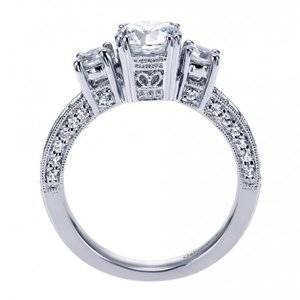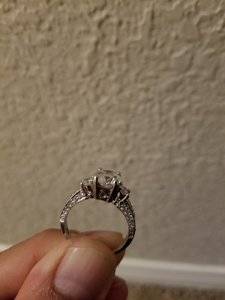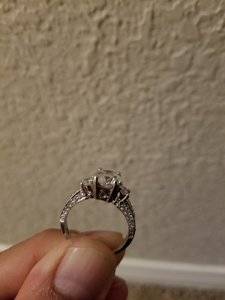Hello,
I am considering getting inscription of GIA number on our engagement ring diamond. It came with GIA cert but was not inscripted with GIA number. My question is: if you take your diamond out of the setting to get it inscripted, do the prongs become weaker since you're readjusting the same metal? Mine are in 4 prongs and i wondered if the prongs would become weaker if I got the diamond taken out for inscription and reput into setting.
Also, the 4 prongs make the diamond look squarish. Is it possible to make a setting with 4 prongs into a 5 prong so that the diamond will look more round than square?
I am considering getting inscription of GIA number on our engagement ring diamond. It came with GIA cert but was not inscripted with GIA number. My question is: if you take your diamond out of the setting to get it inscripted, do the prongs become weaker since you're readjusting the same metal? Mine are in 4 prongs and i wondered if the prongs would become weaker if I got the diamond taken out for inscription and reput into setting.
Also, the 4 prongs make the diamond look squarish. Is it possible to make a setting with 4 prongs into a 5 prong so that the diamond will look more round than square?










300x240.png)